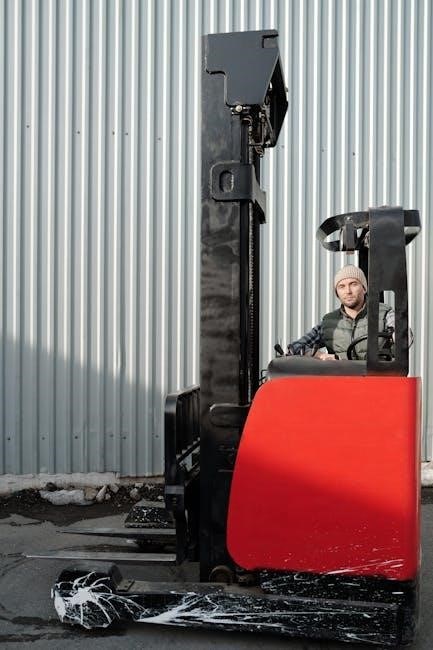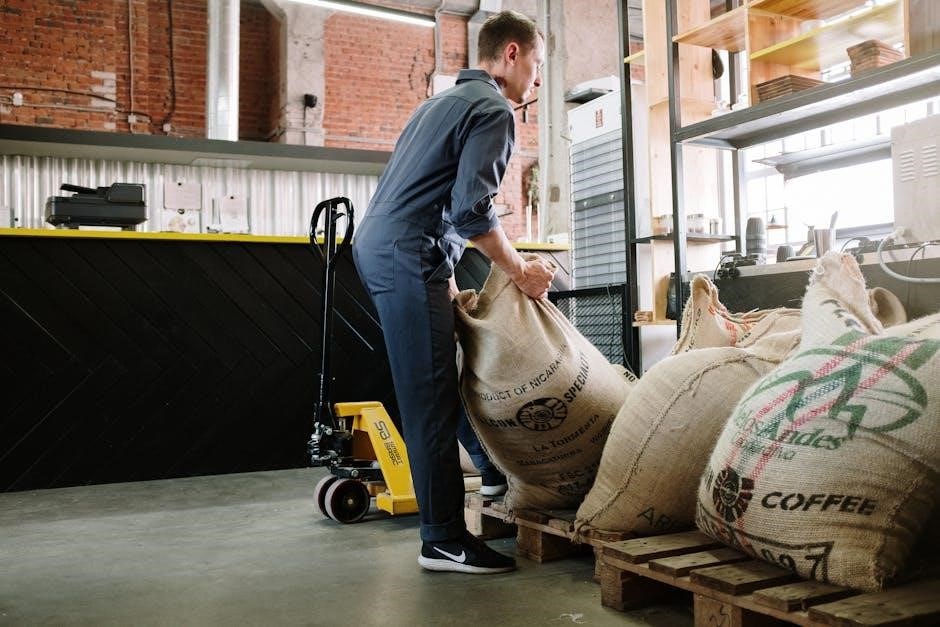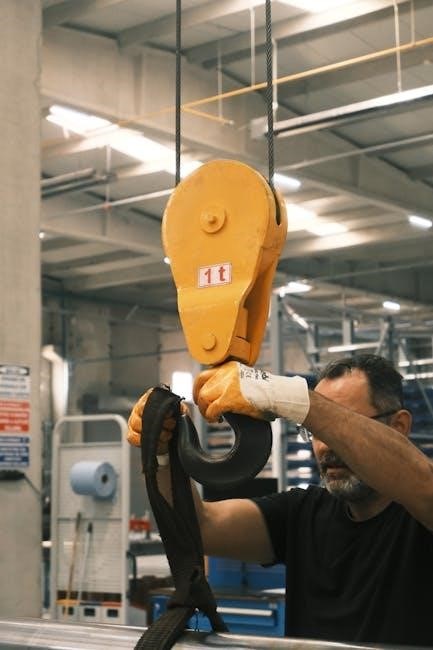Proper lifting points are essential for safely raising the 2018 Malibu LT. Incorrect techniques can damage the vehicle’s frame or undercarriage. Always use designated lift points for stability and safety during maintenance or repairs.

1.1 Overview of the Importance of Proper Lifting Points
Proper lifting points are critical for the safety and integrity of the 2018 Malibu LT. Using incorrect points can lead to frame damage, structural instability, or even accidents. Always rely on designated lift points to ensure the vehicle is supported correctly during maintenance or repairs. These points are specifically designed to handle the weight and stress of lifting, minimizing the risk of damage to the undercarriage or suspension components. Improper lifting techniques can void warranties and compromise the vehicle’s safety features. Manufacturer-recommended lifting points are essential for maintaining the car’s structural integrity and ensuring safe handling during any procedure involving a 2-post lift or other lifting equipment.
1.2 Brief History of the 2018 Malibu LT Model
The 2018 Malibu LT is part of the ninth generation of Chevrolet’s popular mid-size sedan. Introduced in 2016, this generation brought significant updates, including a lighter chassis, improved fuel efficiency, and enhanced technology features. The LT trim, positioned above the base L model, offers a balance of affordability and upgraded amenities such as an 8-inch touchscreen, Apple CarPlay, and Android Auto compatibility. Known for its refined ride and spacious interior, the 2018 Malibu LT appealed to drivers seeking comfort without compromising on performance. Its design emphasized aerodynamics and modern styling, making it a standout in its class. This model year also saw the introduction of safety features like Teen Driver mode and optional advanced driver-assistance systems.

Safety Precautions for Lifting the 2018 Malibu LT
Always position jack stands on stable, level ground and ensure the vehicle is in park with the ignition off. Use approved lifting points to avoid damage and ensure safety during the process.
2.1 Essential Safety Measures Before Lifting
Before lifting the 2018 Malibu LT, ensure the vehicle is on a level surface and apply the parking brake. Engage the transmission in park and turn off the engine. Disconnect the negative battery terminal to prevent any accidental start-ups. Wear protective gear, including gloves and safety glasses. Use jack stands rated for the vehicle’s weight and position them on firm, stable ground. Never rely solely on a hydraulic lift; always use jack stands as a safety backup. Ensure all loose items in the vehicle are secured to prevent movement during lifting. Finally, double-check the lifting points to ensure they are correctly positioned and stable.
2.2 Understanding the Vehicle’s Weight Distribution
Understanding the weight distribution of the 2018 Malibu LT is crucial for safe lifting. The vehicle’s weight is primarily distributed between the front and rear axles, with a slight bias toward the front due to the engine’s placement. This distribution affects the lifting points and ensures stability when raised. The front lifting points are located near the frame rails, while the rear points are situated near the axle. Proper weight distribution prevents the vehicle from tipping or shifting during lifting. Always refer to the manufacturer’s specifications for exact weight distribution ratios. Improper lifting can lead to uneven stress on the frame, potentially causing damage. Ensure the lift arms are positioned correctly to maintain balance and stability.

Locating the Lifting Points on the 2018 Malibu LT
The lifting points on the 2018 Malibu LT are located near the frame rails, both front and rear. These reinforced points ensure safe and stable lifting.
3.1 Identifying the Front Lifting Points
The front lifting points on the 2018 Malibu LT are located just behind the front wheels, near the frame rails; They are metal reinforcements designed to support the vehicle’s weight during lifting. To find them, look for the notches or slight indentations on the frame, about 12-18 inches behind the front tire. These points are specifically engineered to distribute the load safely and prevent damage to the vehicle’s undercarriage. Always ensure the lift arms are securely positioned on these points to maintain stability and avoid any structural compromise.
3.2 Locating the Rear Lifting Points
The rear lifting points on the 2018 Malibu LT are positioned near the rear wheels, just ahead of the rear tire on the frame rails. These points are reinforced metal areas designed to bear the vehicle’s weight safely. To locate them, inspect the underside of the car behind the rear wheels; you’ll find two distinct notches or flat surfaces on the frame. These are the designated areas for lifting. Ensure the lift arms are placed squarely on these points to avoid damaging the vehicle’s undercarriage or suspension components. Always double-check their position before raising the car to maintain stability and safety during the lifting process.

Using a 2-Post Lift for the 2018 Malibu LT
A 2-post lift is ideal for raising the 2018 Malibu LT, offering stability and clearance. Ensure the lift arms are positioned at the designated lifting points near the front and rear wheels for safe and even elevation.
4.1 Positioning the 2-Post Lift Arms
To position the 2-post lift arms correctly on the 2018 Malibu LT, locate the designated lifting points near the front and rear wheels. These points are typically behind the pinch welds on the front frame and near the rear differential for AWD models. Ensure the lift arms are securely seated in these locations to avoid slipping. For precise alignment, refer to the vehicle’s manual or markings on the frame. Once positioned, slowly raise the lift while monitoring the vehicle’s stability. Avoid placing the arms on suspension components or body panels to prevent damage. Proper positioning ensures a safe and even lift, essential for maintenance and repairs.
4.2 Securing the Vehicle on the Lift
After positioning the lift arms, ensure the vehicle is securely fastened to the lift. Engage the parking brake and place wheel chocks behind the rear wheels for added stability. Use lift straps or chains to prevent the vehicle from shifting during the lifting process. Double-check that the lift arms are firmly seated in the designated lifting points to avoid any movement. Once the vehicle is raised, inspect the balance to ensure even weight distribution. Never rely solely on the lift; always use jack stands as a backup for safety. Proper securing ensures the vehicle remains stable, reducing the risk of accidents or damage during maintenance or repairs.

Step-by-Step Guide to Lifting the 2018 Malibu LT
Prepare the vehicle by engaging the parking brake and chocking the wheels. Position the lift arms at the designated lifting points. Raise the vehicle slowly, ensuring stability throughout the process.
5.1 Preparing the Vehicle for Lifting
Before lifting, ensure the vehicle is on a level surface and apply the parking brake. Chock the rear wheels to prevent rolling. Turn off the engine and engage the ignition in the “accessory” position if needed. Remove loose items from the trunk or interior. Check the owner’s manual for specific instructions. Locate the lifting points, ensuring they are free from damage. Position jack stands or lift arms according to manufacturer guidelines. Always refer to the 2018 Malibu LT service manual for precise lifting point locations and preparation steps. Proper preparation ensures a safe and secure lifting process.
5.2 Raising the Vehicle Safely
Raising the 2018 Malibu LT requires a slow and controlled process. Position the 2-post lift arms securely on the designated lifting points, ensuring they are firmly seated. Slowly lift the vehicle, checking its stability at incremental heights. Use jack stands for added safety and support. Always raise the vehicle evenly to maintain balance and prevent shifting. Once the desired height is reached, double-check that all lift arms are properly engaged and the vehicle is stable. Never leave the vehicle unattended while it is raised. Ensure all tools and equipment are clear before lowering it back down. This method ensures a safe and efficient lifting process for maintenance or repairs.

Common Mistakes to Avoid When Lifting the 2018 Malibu LT
Incorrect placement of lift arms and insufficient stabilization are common errors. Always follow manufacturer guidelines to prevent damage and ensure safety during the lifting process.
6.1 Incorrect Placement of Lift Arms
One of the most critical errors when lifting the 2018 Malibu LT is misplacing the lift arms. Using incorrect lifting points can damage the vehicle’s frame or undercarriage. Always refer to the manufacturer’s manual to identify the correct locations. Placing the arms too far forward or backward can destabilize the car, leading to potential accidents. Ensure the lift arms are securely positioned under the designated lifting points to maintain balance and safety. Never use areas like pinch welds or suspension components, as they are not designed to support the vehicle’s weight during lifting. Proper alignment is essential to prevent damage and ensure a stable lift.
6.2 Overlooking Vehicle Stabilization
Failing to stabilize the 2018 Malibu LT during lifting is a common mistake that can lead to dangerous situations. Always ensure the vehicle is on level ground and apply the parking brake. Engaging the brake ensures the car remains stationary, preventing any unintended movement. Additionally, placing wheel chocks around the tires can provide extra stability, especially on inclined surfaces. Neglecting these steps can result in the vehicle rolling off the lift, causing damage or injury. Proper stabilization is crucial for a safe and successful lifting process. Never skip these steps, as they are vital for maintaining control and ensuring the safety of both the vehicle and the person performing the lift.

Maintenance Tips After Lifting the 2018 Malibu LT
After lifting, inspect the lifting points for damage and ensure proper vehicle alignment. Regularly check suspension components for wear and tighten any loose bolts for optimal performance and safety.

7.1 Inspecting the Lifting Points for Damage
After lifting, it’s crucial to inspect the lifting points for any signs of damage. Look for dents, bends, or cracks that may have occurred during the process. Use a flashlight and a wrench to check for structural integrity. If any damage is found, avoid using the vehicle until repairs are made. Neglecting this step can lead to further damage or safety hazards. Always refer to the vehicle’s manual for guidance on proper inspection techniques. Regular checks ensure the lifting points remain reliable for future use. Addressing any issues promptly helps maintain the vehicle’s overall health and prevents costly repairs down the line.

7.2 Checking for Proper Vehicle Alignment
After lifting, ensure the vehicle’s alignment is intact to maintain proper handling and tire wear. Check for uneven tire wear and loose suspension components. If the alignment is off, the steering wheel may pull to one side or vibrate. Resetting the alignment can often be done by driving the car normally, but severe misalignment may require professional adjustment. Always refer to the owner’s manual for specific instructions. Proper alignment ensures optimal performance, safety, and prevents premature tire wear. If unsure, consult a certified mechanic to verify and correct the alignment. Regular checks help maintain the vehicle’s stability and overall driving experience.
Proper lifting techniques ensure safety and prevent damage. Always use designated points and follow guidelines for secure lifting. Safe practices guarantee efficient maintenance and optimal vehicle performance.
8.1 Summary of Key Points
Proper lifting points are crucial for safely raising the 2018 Malibu LT. Always use designated lift points to avoid damage and ensure stability. The vehicle’s weight distribution and lifting techniques must be understood to prevent accidents. Front and rear lifting points are specifically designed for this purpose. Positioning the lift arms correctly and securing the vehicle on the lift are essential steps. Avoid common mistakes like incorrect arm placement and overlooking stabilization. After lifting, inspect the lifting points for damage and check vehicle alignment. Adhering to these guidelines ensures safe and effective maintenance. Ignoring safety measures can lead to serious damage or injury, making proper lifting practices indispensable.
8.2 Final Thoughts on Safe Lifting Practices
Safe lifting practices are paramount when working with the 2018 Malibu LT. Always use designated lifting points to avoid damage and ensure stability. Understand the vehicle’s weight distribution and lifting techniques to prevent accidents. Proper placement of lift arms and securing the vehicle on the lift are critical steps. Avoid common mistakes like incorrect arm placement and overlooking stabilization. Regular inspections of lifting points and vehicle alignment after lifting are essential. Adhering to these guidelines ensures safe and effective maintenance. Remember, safety should always be the top priority to prevent damage and injury. By following these practices, you can maintain your vehicle with confidence and ensure its longevity.